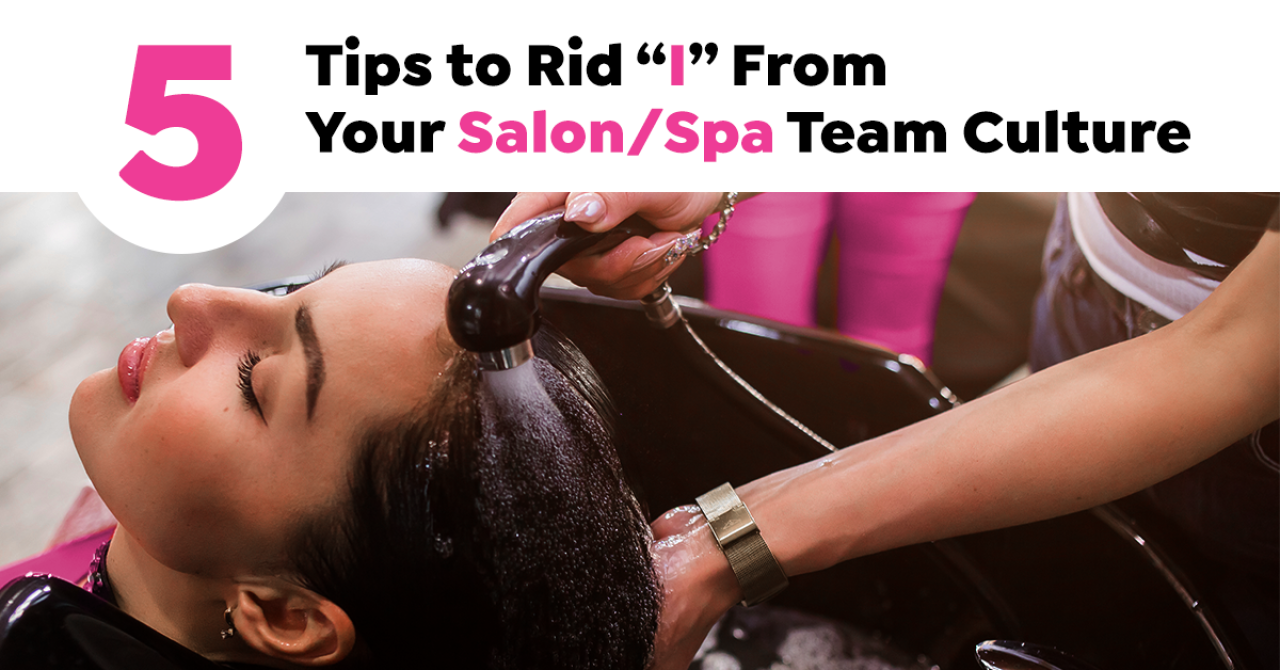5 Tips to Rid "I" from Your Salon/Spa Team Culture

We’ve all heard the line, “There is no ‘I’ in team.” It’s a pretty simple concept. Team and teamwork is about “we.”
In stark contrast, “I” is singular. It’s about “one’s self.”
The desire for personal success is empowering and captivating. It’s about the drive to achieve one’s full potential in career and life.
And then there’s this thing called “teamwork.” Teamwork is the pursuit of like-minded individuals to achieve a common objective, goal and vision.
It’s about taking a group of “I’s” and channeling its collective energy on achieving something truly extraordinary that cannot be achieved alone.
Today, more than ever, the salon/spa industry offers individuals a clear choice to seek career success as either an “independent” or to achieve career success as part of a team.
Getting the money argument out of the way
We’ve done the math a thousand times and the income earning potential, when played by the rules (you know what I mean), can be fairly equal for independents and employees. However, employees always have the edge when it comes to benefits, paid time off and company-funded training and advancement.
The “all the other stuff” argument
Those favoring the independent route tout the need for freedom from the “rules,” “structure” and “drama” of employee-based salons/spas.
FACT #1: Rules and structure are non-negotiable requirements for business success for independent and especially employee-based salons/spas. Winning in business means creating profit and positive equity. Profit and equity are the outcome of adhering to rules and structure.
- Free spirits can definitely create revenue, but creating profit is discipline.
FACT #2: Put two individuals together, independents or employees, and there can and will be drama.
If your chosen business model is “employee-based,” your mission is to create a “team-based” culture. And no, I’m not talking about Team-Based Pay.
I’m talking about your leadership approach to creating the optimum thinking and behavior to drive extraordinary levels of teamwork.
So, if there’s no “I” in “Team,” why is “I” so prevalent in so many salon/spa cultures?
Here are our five No-Compromise Leadership strategies to banish “I” from your team culture:
- Careful what you measure: The beauty of salon/spa software applications is how they can record and measure damn near everything individual service providers do. With commission as the predominant pay method, measuring an individual’s performance numbers is a logical approach. Why? Because commission is and always will be about individual rather than team performance. The more you focus, measure and reward individual performance numbers — the more you reinforce the “I” factor in your team-based culture.
- Excessive multi-level pricing: I get the value of years of technical experience. I don’t get why salon/spa owners have a challenge seeing the barriers multi-level pricing inflicts on team service and client access. I recently coached the owner of a multi-million dollar salon/spa who was struggling with moving away from seven price levels. After years of following the “if you do this — you can charge that” model, it was the price point that defined the individual value. Yes, one can argue the “opportunity” for an individual to charge more. But isn’t the collective value and price point of the “company” more important? One price for all has its advantages, but it may not work for all companies, especially larger ones. FACT: Going beyond three price levels only makes sense if your intent is to grow individuals rather than team.
- Team goals drive teamwork: Again, it’s easy to set an individual’s revenue and critical numbers goals. But isn’t that commission and “I/me/mine”? Why should an individual bother focusing on team goals when their individual goals matter more? A team goal is determined by adding up all the individual goals. A team goal for one month is determined by how many service hours the salon/spa has available for sale (payroll hours) x the target Productivity Rate x how much one hour of service will sell for = Service Revenue Goal for the month. Retail goal is set by the target percentage of retail to total salon/spa revenue. The true power of a team goal sounds like “Everyone is responsible for every hour the salon/spa has available for sale.”
- Payroll is a percentage on your Profit & Loss Statement: And then there’s the old commission thinking (even in Team-Based Pay companies) where an individual’s pay rate has everything to do with that individual’s service price point. WRONG! Service payroll is a line item on your Profit & Loss Statement. Owners must view service payroll as a “percentage” of total revenue. The target percentage is 30% to 35% of total revenue (service sales + retail sales = total revenue). This means for every $1 million in total revenue, service payroll should total $300,000 to $350,000. For every $100,000 the salon/spa generates in total revenue, there’s a potential $30,000 to $35,000 available for service provider pay increases. Pay increases must be based on overall performance and behavior — not just the individual’s revenue.
- Talk team — live team: Creating a team-based culture is the work of leadership. The leader is the voice of the company. The leader ALWAYS refers to the company as “we” — never “I.” The leader leads by example and NEVER compromises the rules, systems and standards he/she expects the team to adhere to. The leader keeps his or her ego in check. The leader serves the team. The leader practices openness and the sharing of information. The leader makes tough decisions to protect the financial integrity of the company and its team-based culture. Got it?
Here’s our challenge to you: In this industry, “I” is more the norm than authentic teamwork. It’s tough and relentless work keeping a team-based culture pure and free of contamination.
Most importantly, salon/spa owners need to take the blinders off and let go of old practices that put “I” before team. That’s the only way to create the extraordinary team culture that all owners envision — and the efficient and extraordinary performance a true team-based culture can achieve.








Comments
No comments found. Start the conversation!
Leave a Comment